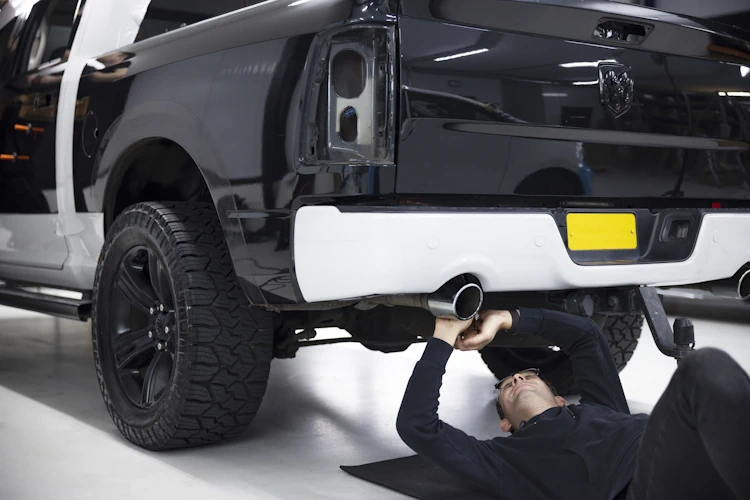In the realm of towing, the tow bar tongue plays a pivotal role in ensuring safe and efficient hauling of trailers and other loads. Selecting the right tow bar tongue for your towing needs is crucial, as it not only impacts the performance and stability of your towing setup but also contributes to overall safety on the road. In this comprehensive guide, we’ll delve into the intricacies of tow bar tongues, exploring the factors to consider, the different types available, installation and maintenance tips, and essential safety considerations.
Understanding Tow Bar Tongues
Definition and Basic Function
Tow bar tongues, also referred to as receiver hitches or hitch tongues, are the part of the towing system that connects the trailer to the towing vehicle. They serve as the intermediary link between the two, providing a secure attachment point for towing.
Different Types of Tow Bar Tongues
Tow bar tongues come in various types to accommodate different towing setups and requirements:
- Fixed Tow Bar Tongues: These are permanently attached to the towing vehicle and have a fixed height and configuration.
- Adjustable Tow Bar Tongues: Offering versatility, adjustable tow bar tongues allow for height and angle adjustments to accommodate different trailer heights and towing conditions.
- Drop Tow Bar Tongues: Designed with a downward slope, drop tow bar tongues provide additional clearance for towing setups with elevated trailers or vehicles.
- Pintle Tow Bar Tongues: Commonly used in heavy-duty towing applications, pintle tow bar tongues feature a lunette ring coupling mechanism for secure attachment.
Factors to Consider When Choosing Tow Bar Tongues
Towing Capacity
Before selecting a tow bar tongue, it’s essential to determine the towing capacity of your vehicle and ensure that the tongue’s rating matches or exceeds the trailer’s weight. This includes considering factors such as tongue weight, gross vehicle weight rating (GVWR), and trailer weight.
Vehicle Compatibility
Compatibility between the tow bar tongue and the towing vehicle’s hitch receiver is paramount for safe and secure towing. Ensure that the tongue’s size, class, and mounting configuration align with the vehicle’s hitch specifications.
Tongue Design and Configuration
The design and configuration of the tow bar tongue should be chosen based on the specific towing setup and requirements. Consider factors such as the trailer’s height, weight distribution, and the desired angle of the tongue for optimal towing performance.
Material and Construction
Tow bar tongues are typically constructed from durable materials such as steel or aluminum to withstand the stresses of towing. Consider the material’s strength, weight, and corrosion resistance when selecting a tow bar tongue for your towing needs.

Types of Tow Bar Tongues
Fixed Tow Bar Tongues
Fixed tow bar tongues offer simplicity and reliability, making them suitable for standard towing applications where height and angle adjustments are not required. They are permanently attached to the towing vehicle and provide a stable connection to the trailer.
Adjustable Tow Bar Tongues
For versatility and flexibility, adjustable tow bar tongues are the preferred choice. They allow for height and angle adjustments, enabling users to level the trailer and achieve optimal towing performance. Adjustable tongues are ideal for towing setups with varying trailer heights or towing conditions.
Drop Tow Bar Tongues
Drop tow bar tongues feature a downward slope or drop, providing additional clearance for towing setups with elevated trailers or vehicles. They help maintain a level towing configuration and prevent bottoming out or scraping on uneven terrain.
Pintle Tow Bar Tongues
Pintle tow bar tongues are commonly used in heavy-duty towing applications, such as towing large trailers or equipment. They feature a lunette ring coupling mechanism that provides a secure attachment point and allows for articulation and movement during towing.
Installation and Maintenance
Installation Process
The installation process for tow bar tongues varies depending on the type and model. Follow the manufacturer’s instructions carefully and ensure that the tongue is securely attached to the vehicle’s hitch receiver. Consider consulting a professional for complex installations or if you’re unsure of the process.
Maintenance Tips
Regular maintenance is essential to ensure the longevity and performance of your tow bar tongue. Periodically inspect the tongue for signs of wear, corrosion, or damage, and lubricate moving parts as needed. Keep the tongue clean and free from debris to prevent rust and corrosion.
Customization Options
Depending on your towing needs and preferences, tow bar tongues can be customized with additional accessories such as hitch balls, pintle hooks, or hitch extensions. These accessories enhance the functionality and versatility of the tow bar tongue for specific towing applications.
Safety Considerations
Adhering to Safety Guidelines
Always adhere to safety guidelines and regulations when towing with a tow bar tongue. Ensure that the tongue’s weight rating matches or exceeds the trailer’s weight, and distribute the load evenly to prevent sway or instability during towing. Follow proper hitching and loading procedures, and regularly inspect the towing setup for any signs of wear or damage.
Safe Towing Practices
Practice safe towing practices, such as maintaining a safe distance from other vehicles, avoiding sudden stops or maneuvers, and reducing speed when towing heavy loads or in adverse weather conditions. Be mindful of the towing vehicle’s braking capacity and adjust your driving accordingly to ensure a safe and smooth towing experience.





